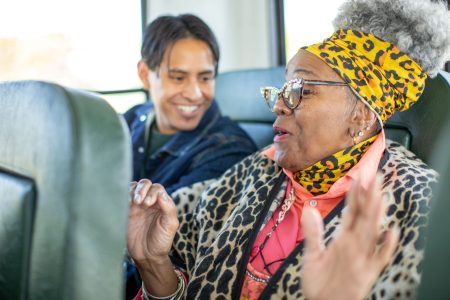Safe Route to Age in Place



In 2019–2020, Age-Friendly Columbus and Franklin County created and piloted the Safe Routes to Age in Place program to address transportation challenges faced by older adults who may not be interested in/able to drive and require access to a variety of transportation options. Older adult residents from three Franklin County communities (Prairie Township, City of Westerville and the Near Eastside of Columbus) participated in the pilot study, which used the MyAmble app developed by the University of Texas at Arlington School of Social Work to track details of their daily transportation experiences during a two-week period. The data collected increased knowledge of older adults’ transportation challenges and options and helped identify targeted infrastructure improvements and pilot programs to provide potential solutions. With support from the Ohio Department of Transportation and in partnership with the University of Texas at Arlington School of Social Work, Age-Friendly Columbus and Franklin County created a report and toolkit to support other communities seeking Safe Routes to Age in Place. The documents serve as a guide for communities to engage with older adults to find real world solutions to mobility challenges.
Website: https://agefriendlycolumbus.org/wp-content/uploads/2016/12/SRTAIP-Final-Report.pdf
Main target group: Older people in general
Sector(s): Transportation
Desired outcome for older people:
Be mobile